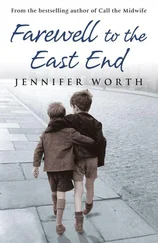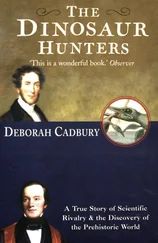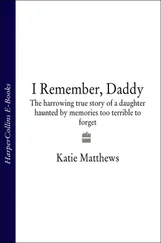Mary spent the whole day hiding. It did not seem rational. I asked her, “Why did you not go to a police station and claim protection?”
Her reply was interesting.
“I couldn’t. I was a thief. They would have locked me up, or taken me back to the café, and made me give the money back to Uncle.”
Her terror of Uncle was almost tangible, so she spent the whole day wandering, and hiding from people. She must have headed south again from Bow towards the river as it was in the East India Dock Road that she finally had the idea of asking someone, a lady who did not look as though she could possibly be mixed up in prostitution, to change the five pound note. As I stepped off the bus that evening she had approached me and I had taken her back to Nonnatus House where she had had the first good meal, and the first night’s sleep in a secure, warm environment that she had had since leaving the sheelin’ back in County Mayo.
It was Sister Julienne who made the arrangements for Mary to go to Church House in Wellclose Square. This house had been set up, and staffed by volunteers as a refuge for prostitutes by Father Joe Williamson.
Father Joe was a saint. Saints come in all sorts of shapes and sizes - they don’t have to wear halos. Father Joe was born and bred in the slums of Poplar in the 1890s. Somehow he survived cold, hunger, neglect, and four years at the front during the First World War. He was a rough, tough East End street kid, crude and loud mouthed, yet when he was no more than a child, he had a vision that God was calling him to be a priest. He overcame a lack of proper education, a thick Cockney accent that no one else could understand, the inability to express himself, and class prejudice. He was ordained in the 1920s, and many years later, after serving as a parish priest in Norfolk, returned to the East End, to St Paul’s parish in Stepney, right in the heart of the red-light district. He saw at first hand the appalling life these girls led. From then on, he devoted the rest of his life to helping prostitutes who wanted to escape. The Wellclose Trust still exists in the twenty-first century, and is still engaged in the same work.
At Church House Mary was given a bath, clean warm clothes and good food. She was with about six other girls who, with varying degrees of success, were trying to kick the habit of prostitution. Mary was too frightened to go out, but gradually her fears about being found and murdered subsided, colour returned to her pale cheeks, and her Irish eyes began to sparkle.
I visited her several times during this period of calm, because she always seemed to want me to, and also because I wanted to learn more about prostitutes. It was during these visits that I learned the harrowing details of her life in London. I think she was relatively happy during this brief period, but it could not last. For one thing her pregnancy was advancing, and whilst she could receive antenatal care at Church House, they were not equipped to cope with a mother and baby. But more important was the fact that Church House was perilously close to Cable Street and the Full Moon Cafe. Whilst she did not leave the house there was no danger, but at some stage, she would want to venture out - Church House was not a prison. When she did, the chances of her being recognised, Father Joe speculated, were very real, and Mary’s fears of abduction or murder were not a fantasy.
In her eighth month of pregnancy, and still only fifteen years old, she was transferred to a home for mothers and babies run by the Roman Catholic Church. It was in Kent, and I went there once, about a fortnight before the baby was born. Mary was full of excitement and happiness. She enjoyed the company and friendship of the other women and girls, who were not prostitutes, but were from the poorest and most vulnerable sections of society. Many of them had babies, and Mary was able to indulge her instincts in the gentlest and happiest of all feminine activities. The nuns held classes in baby care, and she happily bathed and dressed dolls, and listened to talks on colic, nappy rash and breastfeeding, counting the days until her baby would be born.
The staff at Church House received a postcard the same morning as one arrived for me, telling of the birth of a little girl, Kathleen. I thought one of the nuns must have written it, because I knew that Mary could read a little, but could barely write. However, her name was written in big letters across the bottom, with a row of kisses. I was deeply touched by these straggly X’s, about twenty-five of them, and I wondered who else she had communicated her wonderful news to with so many kisses. Her mother? Her brothers and sisters? Did she know where her drunken mother was, or her sisters in the orphanage in Dublin? If a postcard had been sent to the old address as she remembered it, had it been received, or had the family moved on? Did anyone else know? Did anyone else care? Tears came to my eyes as I looked at the row of X’s, kisses showered with such lavish affection on someone she had merely picked up at a bus stop.
A few days later, it being my day off, I went to see Mary in Kent, feeling that someone must rejoice with her over this miraculous event. On the journey, I pondered that it might be the making of her. Motherhood brings out the best in most women, and flighty, giddy young girls often become responsible, reliable mothers, as soon as the baby is born. I had not the slightest doubt that she was a sweet and loving young girl, who was too trusting by half. I reflected that it had been her gentle, trusting nature, combined with the poverty and physical hardships of her life, that had led her to prostitution in the first place. There was no doubt that she hated it, and had been virtually a slave. Now she was liberated.
The train jogged along through the countryside, and I felt a quiet wave of satisfaction and pleasure. I had not reflected upon how she was going to support herself and the baby.
I found Mary radiant with happiness. The soft glow of early motherhood emanated from her, and seemed to embrace me with its warmth as I entered the door. Two months’ rest, good food and good antenatal care, had worked miracles on her. Gone was the pale, pinched look, gone the nervous hand movements; above all, the fear had disappeared from her eyes. She was completely unconscious of her beauty, which made her all the more appealing. And the baby? Well of course, every baby is the most beautiful in the world, and this little one surpassed all others without even trying! Kathleen was ten days old, and Mary told me all about her excellence: how well she slept, how well she fed, how she gurgled and laughed and kicked. She prattled on joyously, totally absorbed by her own all-consuming love. I left thinking that this was the best thing that could possibly have happened to her, and that a new life was opening up for Mary.
A fortnight or so later a postcard arrived:
NERS JENY
NONATUN HOSE
POPLER LUNDUN
It is a tribute to our postal service that it arrived at all, for, apart from the address, it had no stamp. On the back was scrawled:
BABY GON. CUM TOO SEE MEE. MARY xxxxxx.
I showed the card to Sister Julienne, feeling concerned.
“Does GON mean gone? If so where? Surely it cannot mean the baby has died?” I asked.
Sister turned the card over in her hand several times, before saying: “No, I think if the baby had died, she would have written DED. You had better go to see her on your day off, which is obviously what she wants.”
The train journey to Kent seemed longer and more tiresome than the previous one. I had no happy thoughts to make the time fly past. My mind was puzzled, and an unpleasant feeling of foreboding would not go away.
The mother and baby home looked much the same as before, pleasant open grounds, prams dotted about the gardens, smiling young women, nuns going about their work. I entered, and was taken to a sitting room.
Читать дальше












